How To Get Retail Shoppers To Make Unexpected Purchases In Your Store
.webp?width=760&height=395&name=iStock-73206539-hat-steaming%20(1).webp)
Subscribe to our newsletter
One of the best things you can hear in a retail store is, “I was just walking by and spotted this, and I had to have it.”
Why?
It leads to an unexpected purchase, which is where the real money is in retail. Shoppers haven’t searched a dozen sites for every feature and benefit or half a dozen others for the lowest price in mint, used, or questionable condition.
That’s the goal of every merchant – to sell the want, not the need.
Unfortunately, many retailers still think they’re in the need business. Hence the moniker, “Get them in and get them out quickly.”
Several years ago, there was a trend to place all the jeans and slacks on hangers in one area and tops in another. The thinking was that people just looking for pants wanted to see all their options in one place.
But let’s face it—jeans just aren’t riveting, no matter how many rivets they have on the pockets. Dress or casual pants don’t hold many surprises, and putting dozens of brands of jeans together on racks just drove shoppers away.
As I've said in my books, shoppers wanted little areas of discovery where they could immediately see differences.
Pant sales went down, stores reversed course, and orders were returned.
That also killed average tickets as well.
Why?
Because shoppers found no surprise or delight and never saw anything unexpected that made them take notice.
In another post, I referred to it as "serendipity"—that shoppers discover items or services they didn’t set out to buy but did. Merchandising is one way, demonstration is another, and you can even incorporate it into your selling.
The New York Times cited qualitative data showing that people fall into three groups.
- Some were called “non-encounterers,” who see through a tight focus.
- Other people were “occasional encounterers” who stumbled into moments of serendipity now and then.
- And finally, “super-encounterers” reported that happy surprises popped up wherever they looked.
While there are those people who only want what they want, non-encounters, they shouldn’t be running retail stores.
Retail brilliance comes from "surprise and delight," not "efficient and predictable."
The key to using serendipity to make more retail sales in your brick-and-mortar store is to show, don’t tell.
When I started out selling cowboy clothes many years ago – don’t judge – I would set up a guy at the front of the store just steaming cowboy hats into custom shapes like in the picture at the top of this post.
It brought attention to the front of the store and drew customers in from the mall who had never seen anything like that. That demonstration resulted in the number one question, “What are you doing?” This then led to a conversation and often a hat sale.
I also frequently mixed up the categories in the Western wear store so someone looking for one particular thing would view something totally different.
Notice the photo below with several of the priciest boots atop the buckle display to help drive shopper behavior. This is just one of the reasons I received the highest increase in sales from the number one mall in the US.
Discover How to craft a retail merchandising plan with this comprehensive primer
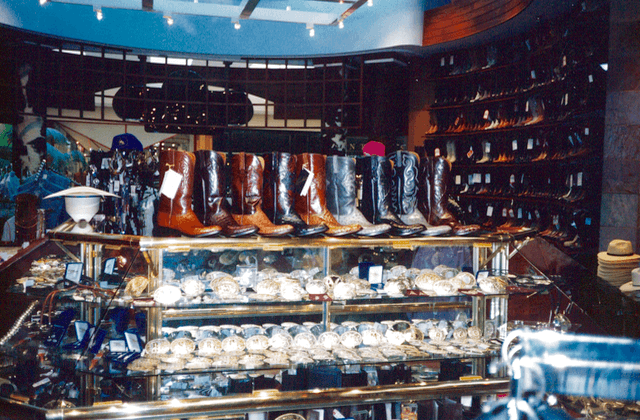
If you’ve ever been to Las Vegas, I’m sure you’ve seen this chocolate display of Jean Phillipe Patisserie.
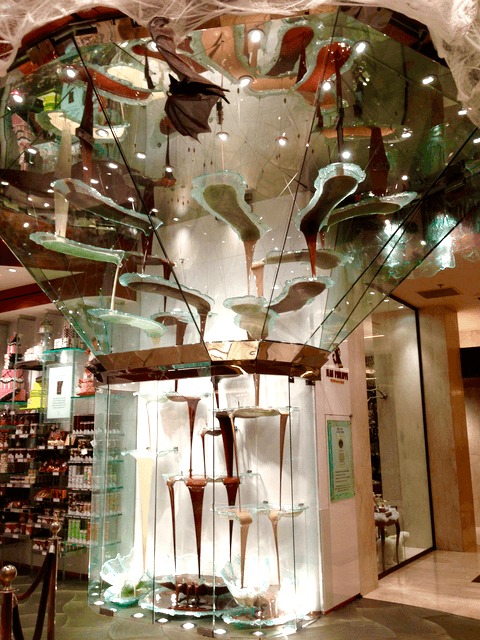
It is possibly the world’s most intricate chocolate fountain in the front window facing the central passage through the Bellagio Hotel. Sure, people take snaps, but as many tell their friends, they had to buy some chocolate.
Bingo!
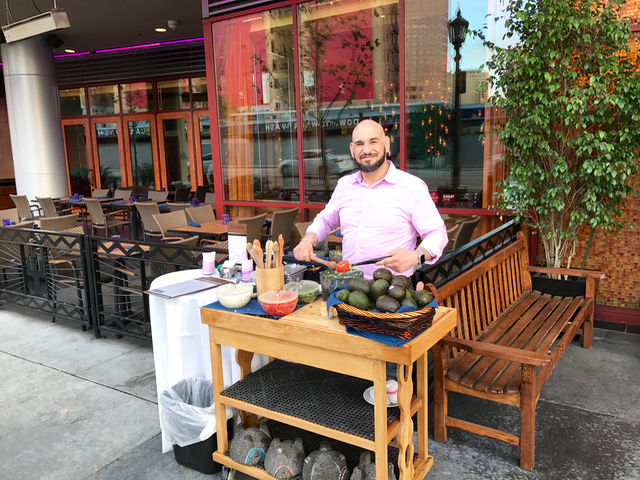
Rosa Mexicano is located by LA Live in the burgeoning South Park area of downtown Los Angeles. I encountered a smiling manager making fresh guacamole in front of the restaurant.
It was early, and the restaurant was sparsely populated. He put a face to the business and in addition to the best guacamole I’ve had, filled up that restaurant within the hour - all of us ordering their $15 handmade guacamole.
Brilliant!
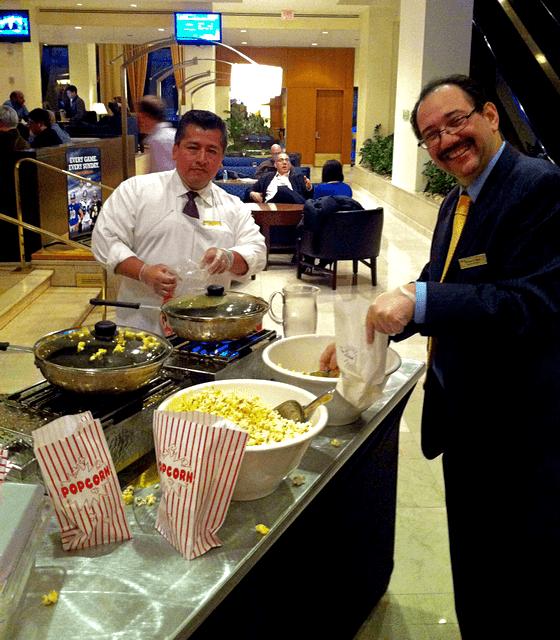
The Arlington Crystal Marriott Food and Beverage manager served popcorn in the lobby. It got people to stop and notice - again - a friendly face, and many went in and got drinks.
Smart.
What can you show or demonstrate to passersby?
And no, not racks and racks of sale junk in front of your doors! You want to begin by offering something on your busiest days, when you have the most chance of discovery.
Regular readers know I have picked on Nordstrom’s sales abilities a time or two, but I applaud their serendipity this time.
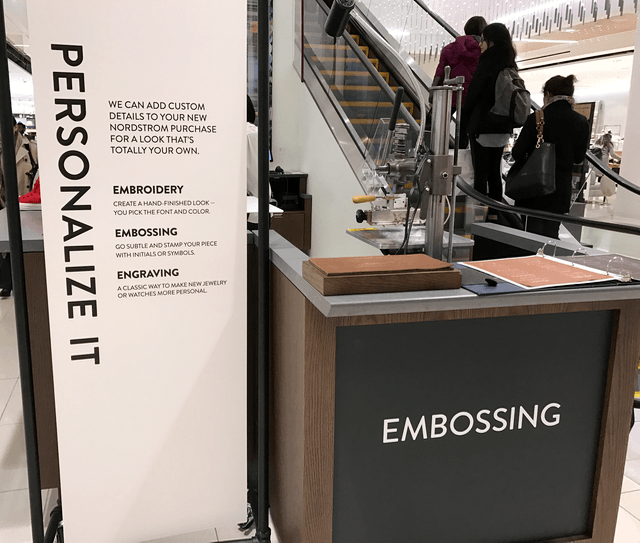
Right in the middle of the store was a whole area manned by two friendly associates where you could get what you purchased engraved, embossed, or embroidered. Notice the signage so shoppers quickly got it.
What services do you offer on a brochure or only when people ask?
How could you represent that in a new in-store way?
Department stores used to be good at serendipity. Nowadays, with all the store-within-a-store concepts, navigating can feel like work. And yes, there can be a fine line between serendipity and clutter.
This small boutique has just enough serendipity in-store but too much for a window.
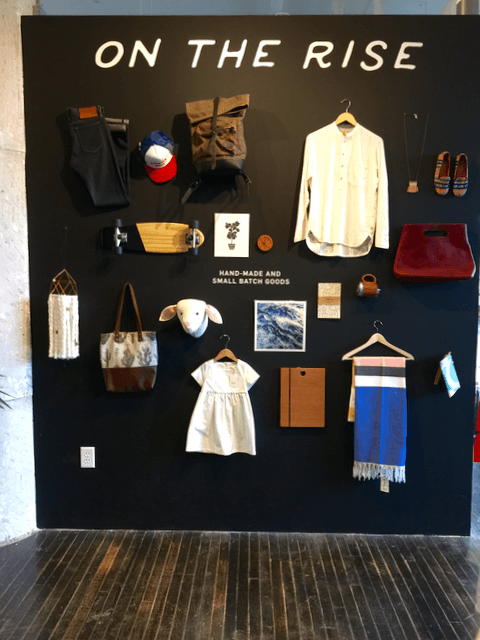
You never want shoppers to feel shopping is work, akin to something like this…
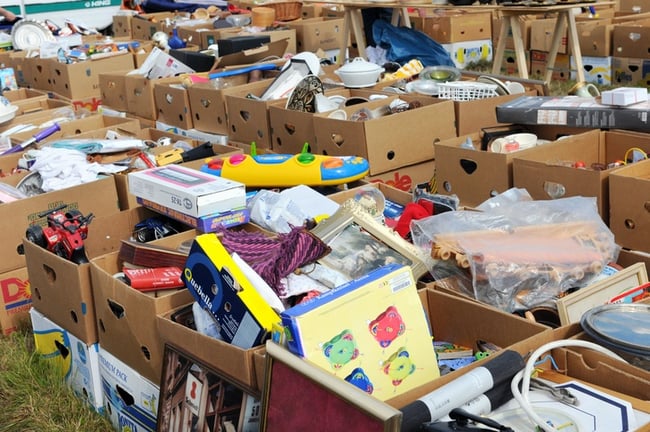
And yes, some people love the thrill of the hunt on a rainy morning or at a consignment shop. That’s not what I’m talking about here, either. I’m talking about you consciously displaying, showing, and demonstrating to get shoppers’ attention.
You can make serendipity happen one-on-one as well.
As a retail sales trainer, I would be remiss if I didn’t share a tip for incorporating this into your selling presentation.
As you move to the payment desk/iPad or immediately after, ask, "Can I show you your next purchase?" Or "Can I get your opinion on this new item we just got in?"
Then, show them something unrelated. If he bought himself a watch, show him a pair of amazing earrings. If she purchased everything to build an outdoor deck, show her a pink flamingo lawn ornament.
Do you see the pattern?
It has nothing to do with the purchase they intended
You’re helping them stumble upon a discovery. That helps train them to look around, not just click and collect.
Your retail sales training should emphasize the importance of always showing, demonstrating, connecting, and enticing to keep shoppers' discovery process open.
Three questions that kill that discovery
- Do you still want to look around?
- Anything else?
- Is that all?
Those questions shortcircuit their natural desire to consider other unrelated items. You’ve killed serendipity.
That’s because repeating it for another is much easier once a shopper says yes to one purchase.
See also: Is Logic Ruining Your Sales?
Serendipity is an opportunity you can't ignore
Avoid serendipity and watch your retail sales tank. Too many stores are just too...well..logical.
The one thing a brick-and-mortar store can play up is the sense of discovery...of serendipity. Read even more about it here.
And if you think I’m talking about add-ons here, I’m not. I am talking about doing what you can do regularly to broaden your shoppers’ discovery experience.
Help shoppers get out of their one-item shopping lists, and your sales will build, not tank.
To create memorable experiences, get my 70-lesson online retail sales training program SalesRX.



